Gothic
1/20
There's no tags or description
Looks like no tags are added yet.
Name | Mastery | Learn | Test | Matching | Spaced |
|---|
No study sessions yet.
21 Terms
Gothic Period
1200-1400
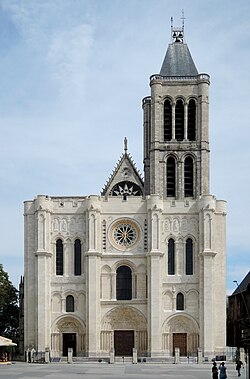
The Abbey Church of Saint-Denis, 1140-44, Gothic
-The Birth of Gothic
-Abbott Suger: had a hand in creating the gothic style → Comissioned and helped design the church.
-Church was built to house the incrasing amounts of pilgrims visiting.
-Houses the remains of emperors
-Gothic built on the idea that light is the manifestation of god himself
Features a lot of stained glass
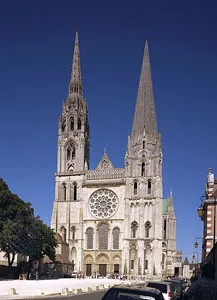
Cathedral of Notre Dame, Chartres, France, West Facade, 1260, Gothic:
-Cullt of the Virgin Mary had grown during this time: Notre Dame built in Mary’s name
-Multiple building phases, fires, lightning.
-Flying Busttresses: support coming out of the wall, exert more force, which allows higher, thinker walls with more windows for the “God as Light” motif in the gothic style.
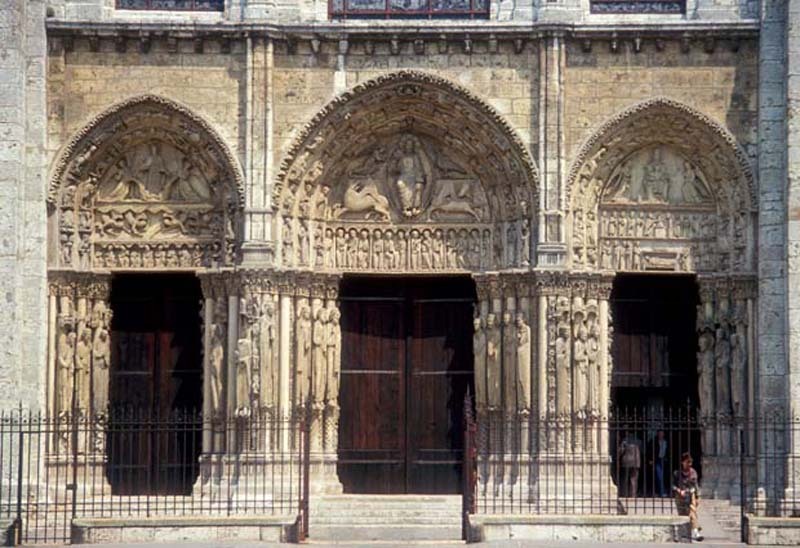
Royal Portal, West Facade, Chartre Cathedral, Gothic
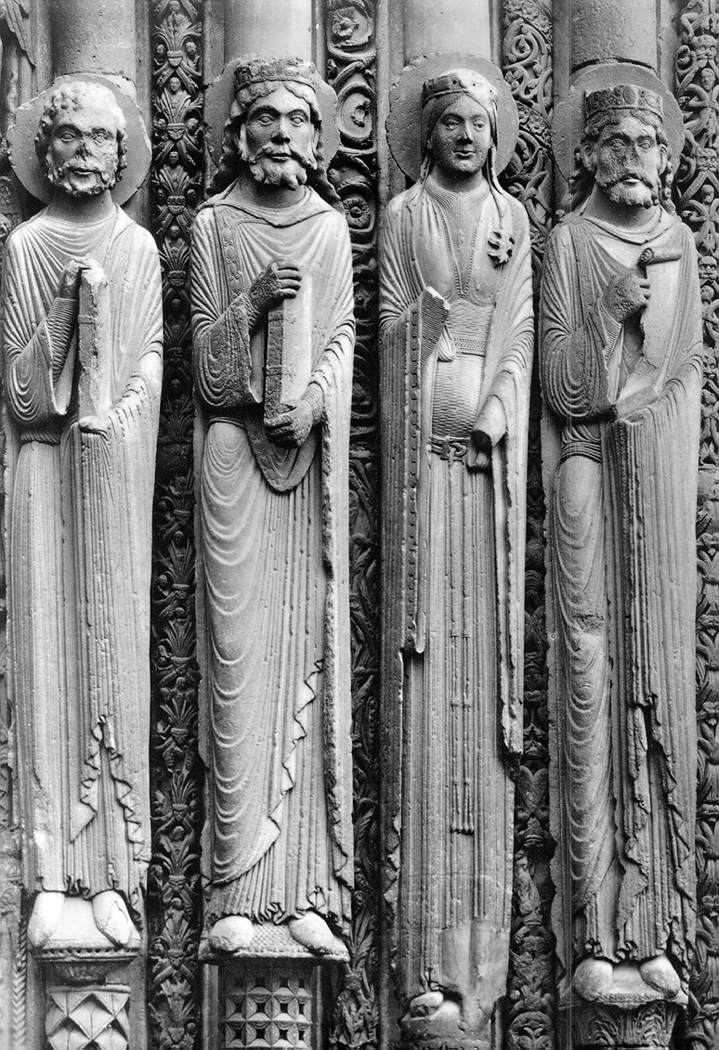
Central Portal Jamb Figures, Royal Portal, West Facade, Chartres Cathedral, Gothic
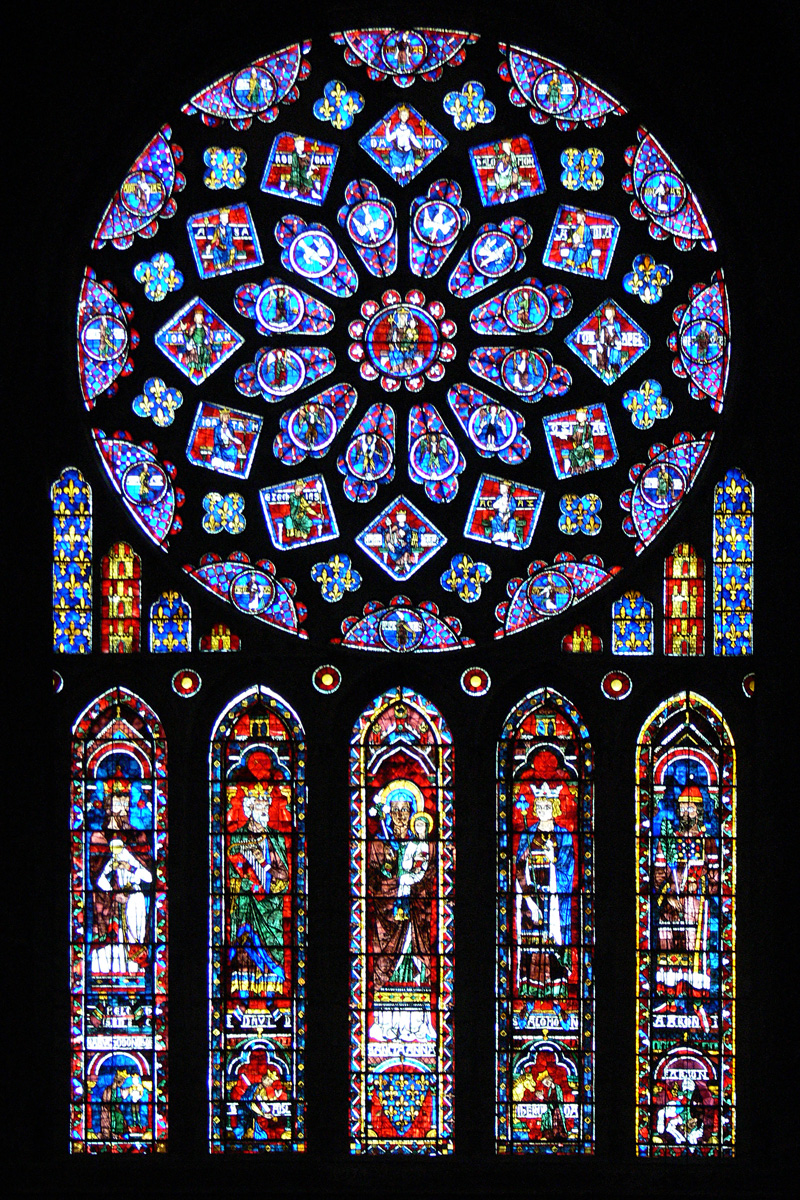
Rose Window and Lancets, North Transept, Chartres Cathedral, Gothic
-Lancets: old testiment figures, political (Queens,kings, etc) donated by a king of France, shows no separation of Church and State, all connected.
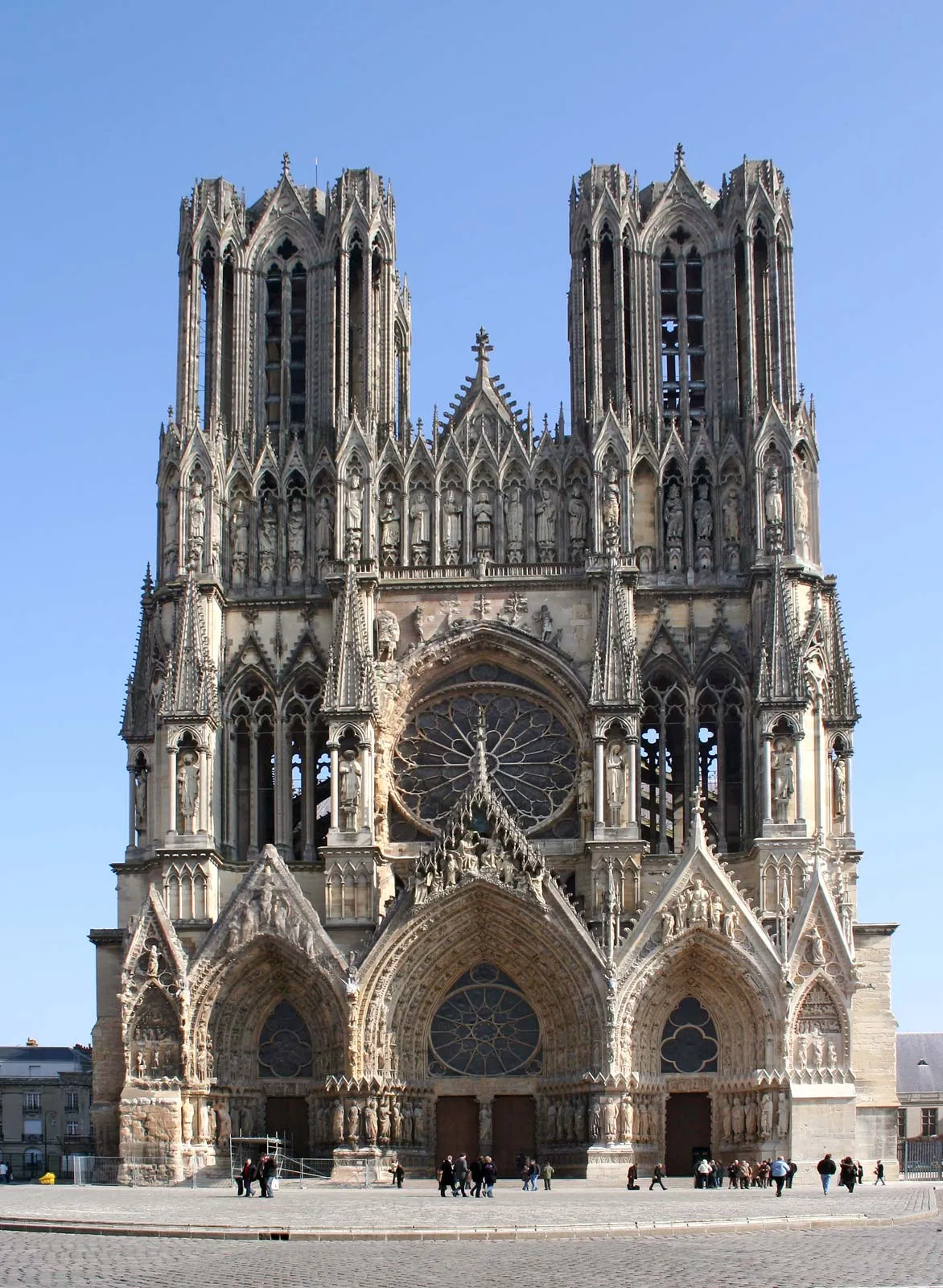
Cathedral of Our Lady (Notre-Dame) Reims, France, Gothic, 13th-14th
-Church where kings are crowned.
-Emphasis on height and verticality
-Chevet: Mark of a high gothic church, blend of transepts and apse of church
-Bombed in WWI
-Flying Butresses → Allowed the Gothic style to happen
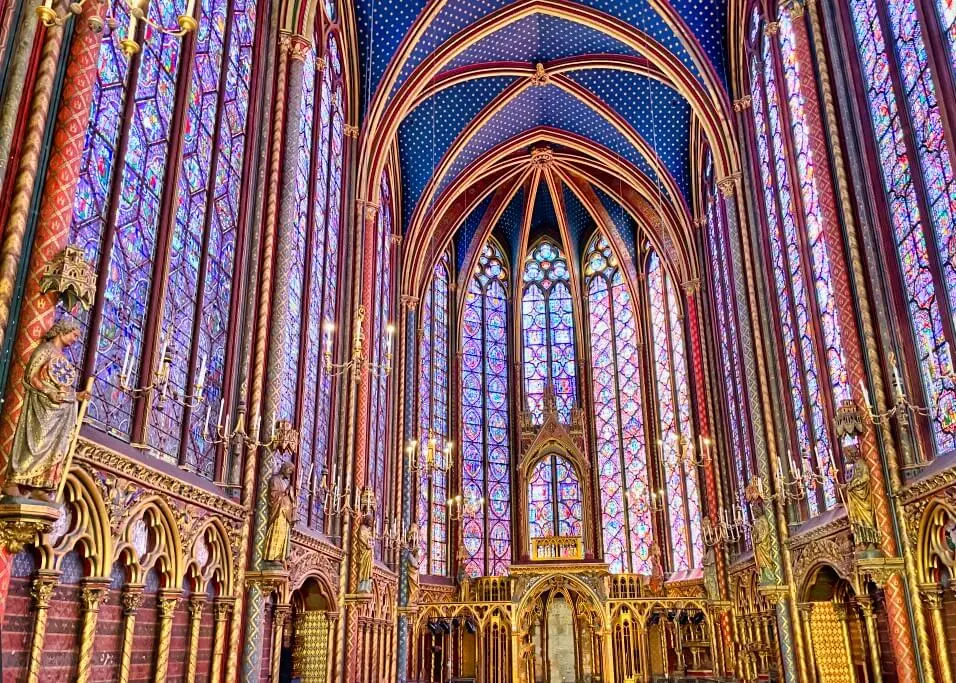
Saint Chapelle, Paris, Gothic
-Rayonnant Gothic: Emphasis on the interior and stained glass
-Holy chapelle of the palace of the king
-Houses relics
-King, court, and royal family the only ones allowed to go to the upper chapelle, everyone else went to the lower.
-Walls almost entirely stained glass → Flying buttresses help with the structural integrity and support.
Early English Gothic
1290-1300
Decorated Style (English Gothic)
1290-1350
Perpendicular Style (English Gothic)
1350 -
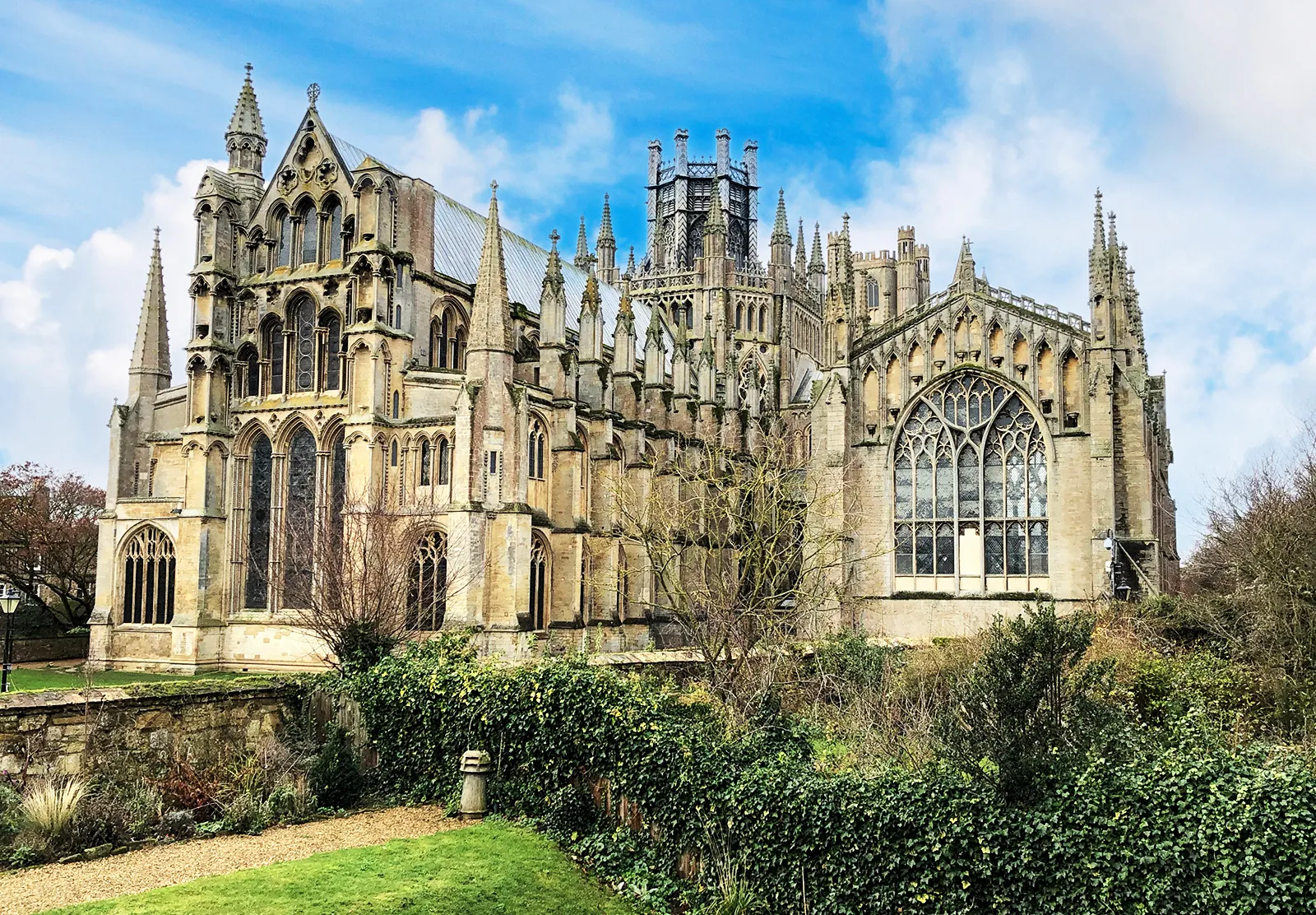
Ely Cathedral, England, Early English Gothic
-Took a lot of money and resource to make, so they went through style changes while they were making it.
-Mix of serveral construction phases
-Etheldreda: Anglo Saxton princess, took a holy vow of virginity, but was married off anyway, so she ran away and founded a nunary, died, and people later found her body not corrupt/decomposed. → Became a saint, Church was built on her burial site.
-Romanesque Arcade, Nave
-West Entry is early english gothic.
-Lady Chapel is decorated in gothic style → Headless statue had head taken off during the iconoclasm.
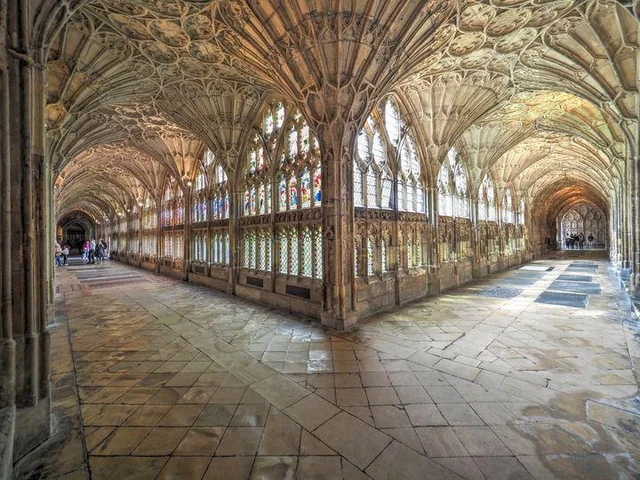
Great Cloister, Gloucester Cathedral, English Gothic
-Fan vaulting, emphasis on the circle/roundness, glass ceiling, makes a trippy effect or otherwordly experience, helps monks see visions and think about god.
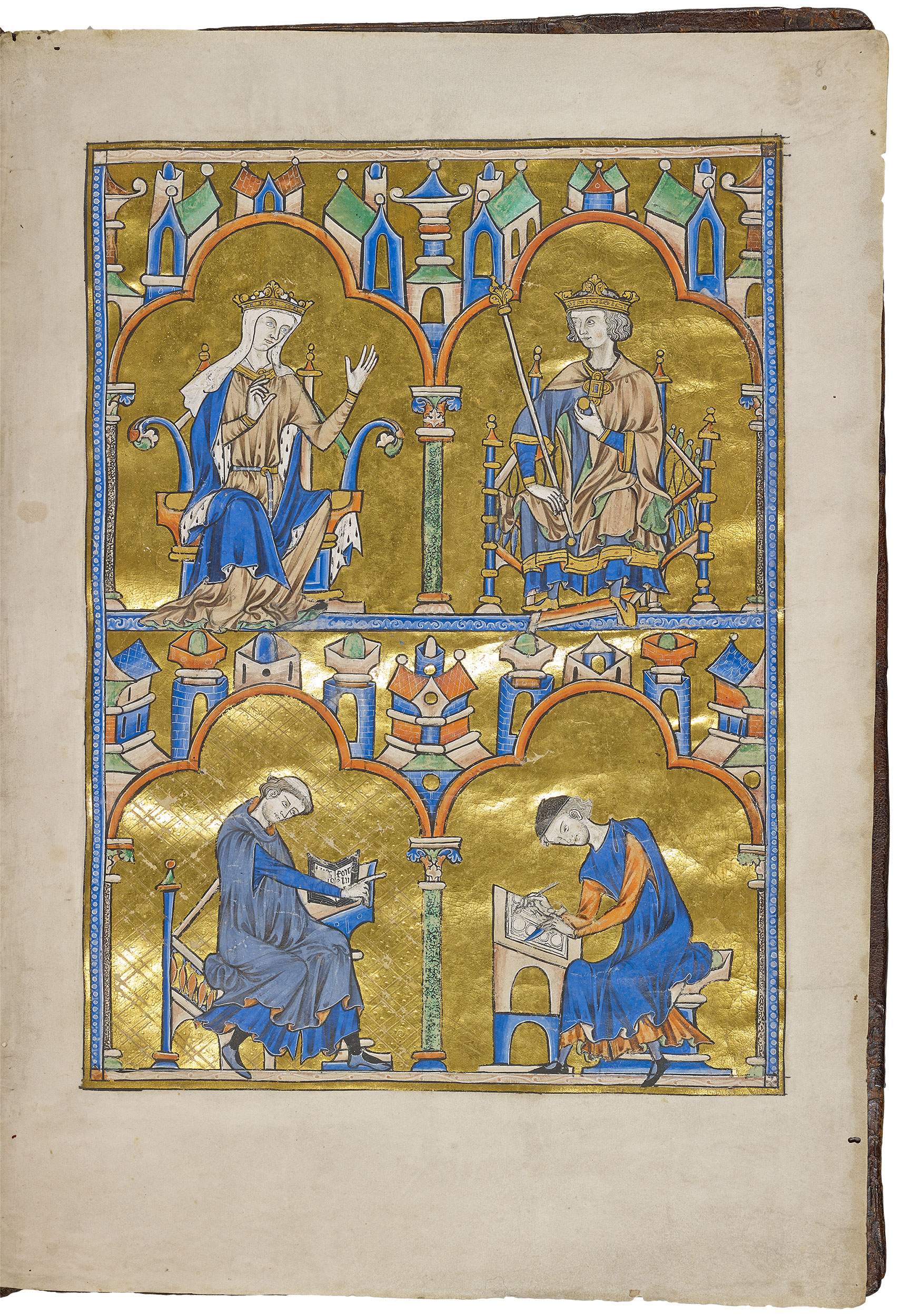
Blanche of Castile and King Louis IX, Bible Moralisee, c. 1230, Early English Gothic
-One of the most expensive books ever made → Connected to the french royal house
-So heavily illustrated → Every few sentences theres illustration, and then illustrations of the commentary on the previous illustrations.
-King Louis IX was a teen when he became king, so his mother commissioned this book to teach him how to be a good ruler.

Scenes from the Apocalypse, Paris Oxford London Bible Moralisee, 1225-45, English Gothic
-Another example of triple comentary
-Complicated relationships in books
-Compare the bible’s texts to the things going on in their lives.
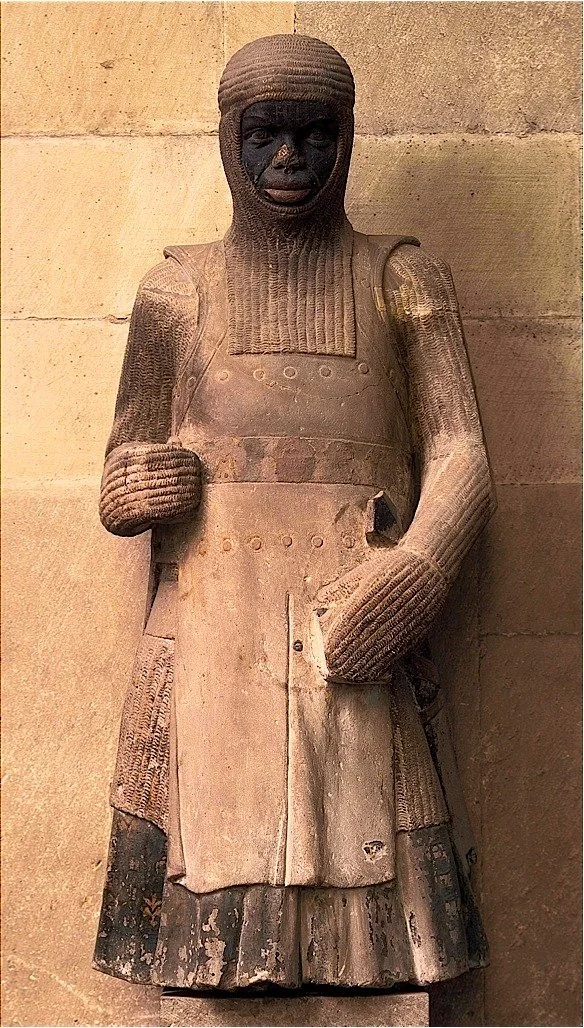
Saint Maurice, Magdeburg Cathedral, Germany c. 1250 English Gothic
-One of the first depictions of a black African person. Attempt to depict non-european facial features.
-Portrait like
-seems to be a real person, working from a model
-Indirect evidence of black people in medieval Europe.
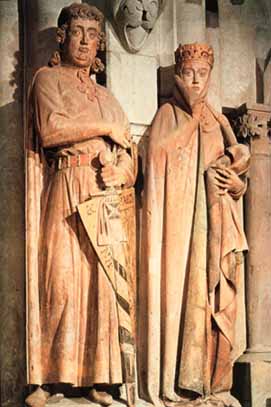
Ekkehard and Uta, Namburg Cathedral, Germany, 1245-60, English Gothic
-Donor portraits of people who have been dead for a long time prior to making them
-Realistic proportions, dynamic, expressive faces
-Uta: Appears reserved, her cloaks weight is portrayed well, can tell it was based off a real person.
-Ekkhard: looks regal, powerful
-Feel individualized and expressive of personaities in a way we haven’t seen before.
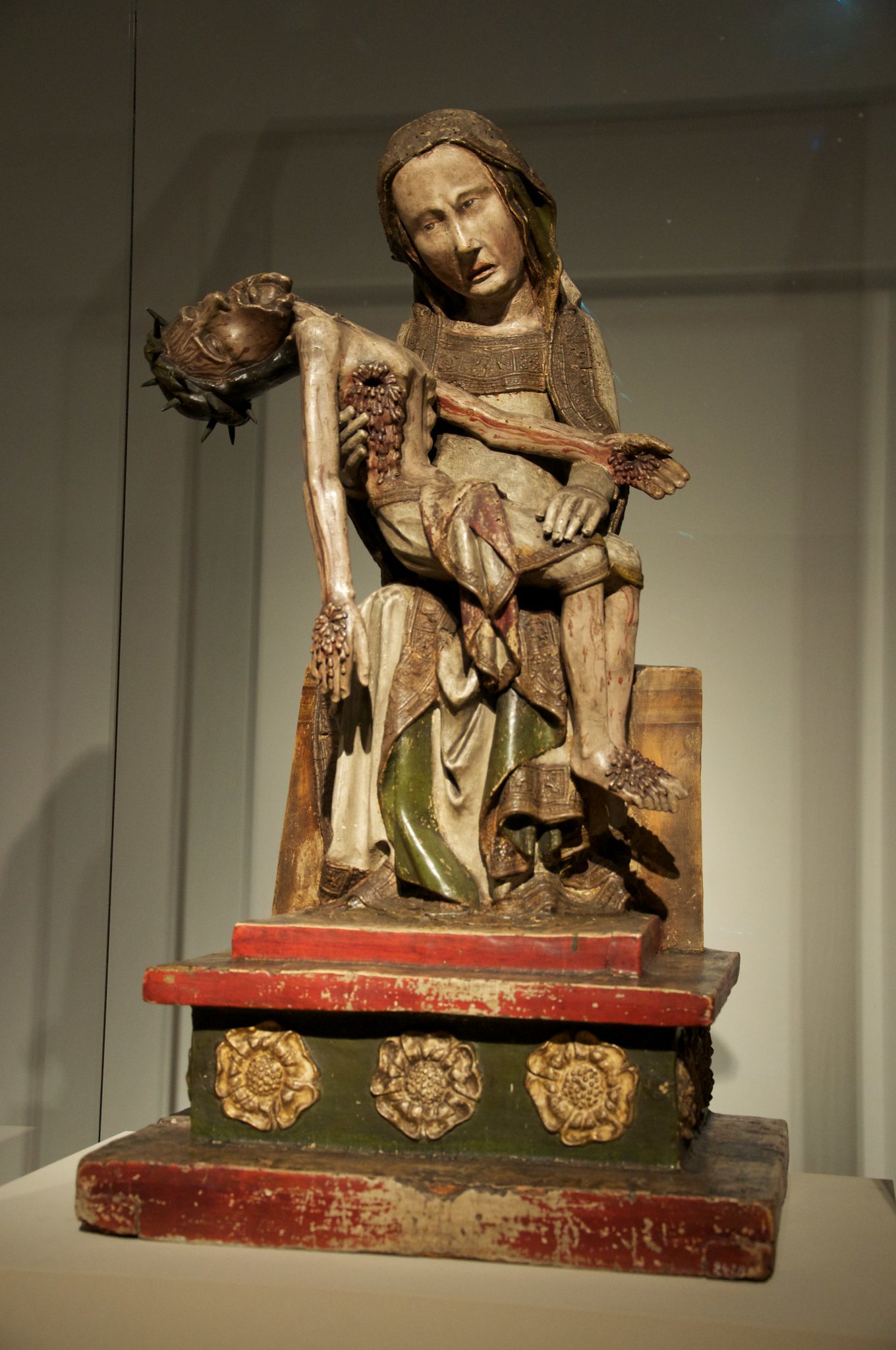
Rottgen Pieta, Germany, c. 1330, English Gothic
-An emphasis put on the humanity of Jesus and Mary during gothic, this piece shows that.
-Mary normally looks passive and pristine, but they are letting her realistic emotions show in this one.
-Emphasis on the suffering of Christ

Christ Triumphans, Italy, 1220, English Gothic
-Not realistic, not yet wanting to show Christ as not defying death.
-Emphasizing human suffering
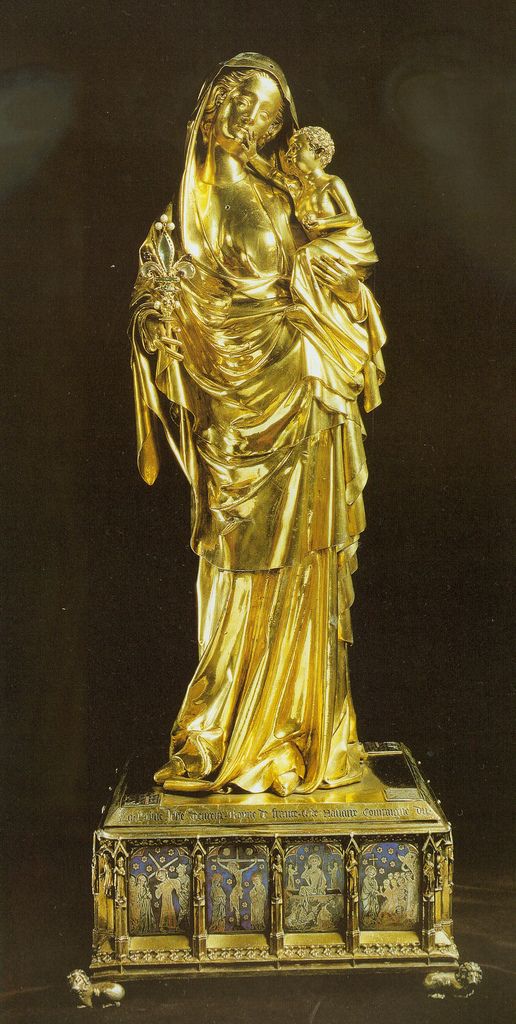
Virgin of Jeanne d’Evreaux, French, 1324-39, English Gothic
-Late Gothic: focus on humanity of Jesus
-Emphasis on Mary’s interaction with jesus → Humanity
-Controposto S-shape: unnatural, but very dynamic.
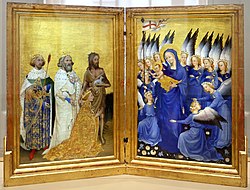
The Wilton Diptych, English, 1395-99, Late Gothic
-Private devotional object
-King Richard III of England comissiond it: him with saints behind him
-white stag= his embelmb
-International Gothic: Has spread all over the globe